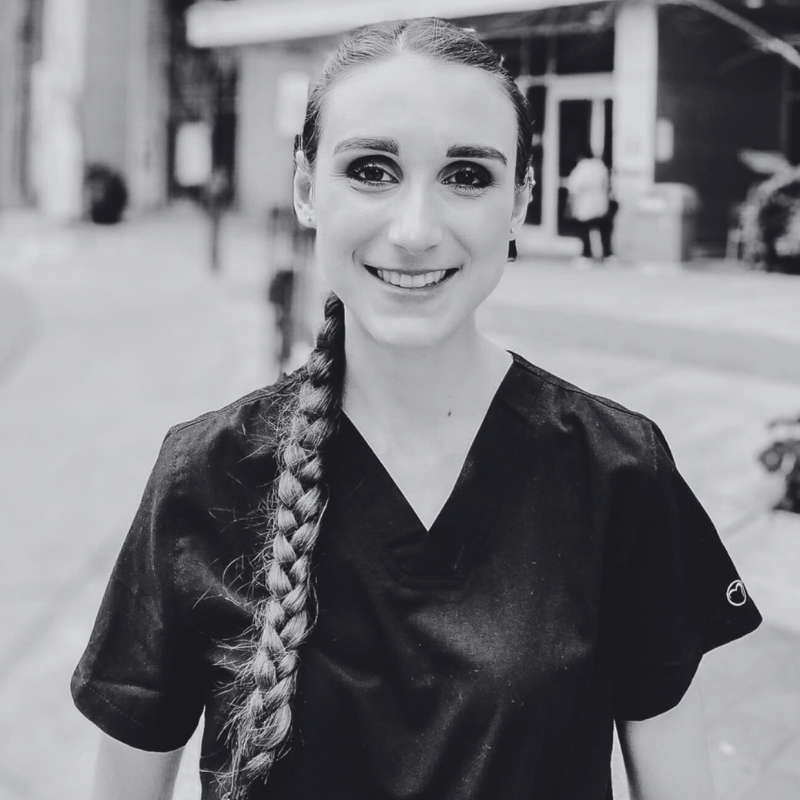PhD candidate Autumn Rennie has recently completed two film projects. The first one, Lights, Camera, and a Call to Action, is a documentary which highlights the creativity and lived experiences of a theatre artist, a musician, and a painter, all of whom live with disabilities. Their stories reveal how art can serve as a form of advocacy, resistance, and social transformation. By blending visual artistry with intimate storytelling, the film challenges audiences to expand their understanding of human diversity and recognize the powerful role of art in building a more inclusive world.
Her second film, Becoming the Butterfly, is a work of creative nonfiction that follows Dagian, a stroke survivor navigating a disorienting world of fading memories. With the support of his wife and daughter, Dagian undergoes a profound transformation, not only of the body, but of the self. The film grew out of workshops with brain injury survivors, many of whom used metaphors like being “lost at sea,” “fragmented,” or “living in two timelines” to describe their experiences. These evocative images became the emotional core of the project, which moves beyond clinical language to explore the psychological, physical, and emotional dimensions of illness. The film also highlights the role of caregivers, families, and communities in the recovery process.

Both projects are deeply personal for Autumn. “As someone who has lived with disability their entire life,” she says, “I have spent a long time grappling with accessibility barriers and stereotypes surrounding body and mind difference.” She remembers how, during her undergraduate studies, she first discovered that academic accommodations even existed. It was also then that she encountered disability studies and began engaging with disability advocacy. A pivotal moment came in her final undergraduate year, when she took a course titled Politics of Disability taught by the late Honourable David Onley. “An incredible instructor, past Lieutenant Governor of Ontario, and disability advocate himself,” she recalls. “I was inspired not to see my own disability as a limitation, but a way to rethink, as his first lecture was titled: ‘What is normal, and what is abnormal?’” Since then, Autumn has worked as a Youth Accessibility Leader with the Canadian Government, studied theatre and film, and is now pursuing a PhD at the IHPST. Her research focuses on how art, especially cinema, can help us understand bodymind difference in ways traditional medical tests and knowledge often cannot.

Autumn, who is also a medical student, approaches the profession with a critical lens shaped by her lived experience and diverse academic background. “Upon entering the world of medicine years later,” she says.
I found myself challenged in new ways. While I loved (and continue to love) so many aspects of the profession, I was also troubled by the dominant notion of ‘cure’ —a concept that often frames bodies and minds that deviate from normative standards as problems to be ‘fixed.’
She began to question how medicine might move beyond its fixation on cure, which can stand in tension with disability, and to consider how art might offer a way of challenging these assumptions, both within the medical field and outside.
These tensions shape her PhD project, which fuses academic inquiry with hands-on filmmaking and challenges conventional ideas of what counts as evidence in medicine. “Clinical trials and data are important,” she says, “but so are stories. So are metaphors. So are the lived experiences of people whose voices are too often silenced.”
According to Professor Suze Berkhout, Autumn’s supervisor, her work contributes to new methodologies in participatory research. “She has developed an approach to collaborative filmmaking that moves the practice beyond documentary-style film, and into practices of narrative film genres (drama, comedy, horror),” Berkhout explains. “Collaborative filmmaking is a practice whereby the whole of the development, shooting, editing, and post-production steps that go into making a film are co-created with impacted community members or research participants as members of the filmmaking team. Documentary is of course powerful and important as a film genre, but there is something else that we can do when we are working outside the limits of what is/what has been, and move into speculative and imaginative possibilities where we are not constrained by how we think about reality. For a participatory practice, this is so important, it means that we invite a broader set of visions and experiences into shaping our collective imaginaries.”
Professor Berkhout, who also served as an executive producer on Becoming the Butterfly, sees film as a vital tool for capturing invisible or contested experiences in healthcare. “As co-investigator on the SSHRC Insight Grant A Situated Neurology, one of my research interests is to be able to find new ways of understanding and expressing invisible, contested, and unspeakable experiences that exist within healthcare settings and medical conditions, particularly for people whose positionalities often leave them excluded as knowers or excluded as agents who impact clinical care. Film is such an exciting medium, since it allows for a multimodal layering of experience and offers a sensory way into understanding time and temporality — key issues that I work with.”

She describes Research-Creation as a powerful method to “mobilize and transform knowledge.” For clinicians, it offers an alternative lens on the impacts of sickness, one that moves beyond narrow biomedical framings. For the public, it opens a window into the intimate spaces of the unspeakable:
Arts practices generate the feeling of something that can be shared outside of specific words,” she says. “A feeling of a particular truth, for a particular person, at a point in time —but then by being shared and witnessed, it invites understanding across differences that might not otherwise be there, without presuming to give a universal, capital-T truth. It is so powerful.
For Autumn, both films have been a transformative learning experience: “the discoveries we made during the research process of these films was remarkable, shedding new light on the lived experiences of all our co-creators in novel and previously unexplored ways. More than anything, having the opportunity to learn and find inspiration in them meant the world to me,” she reflects. “From the start of my PhD to now, I feel like a changed person—with new eyes and perspective on medicine, philosophy, scholarship, and life. Entering into each film with an open heart and mind has helped me grow in ways I never imagined. I have come to see my own experience with disability in a completely different light, and to continue advocating as an academic, future physician, filmmaker, and member of society.”


